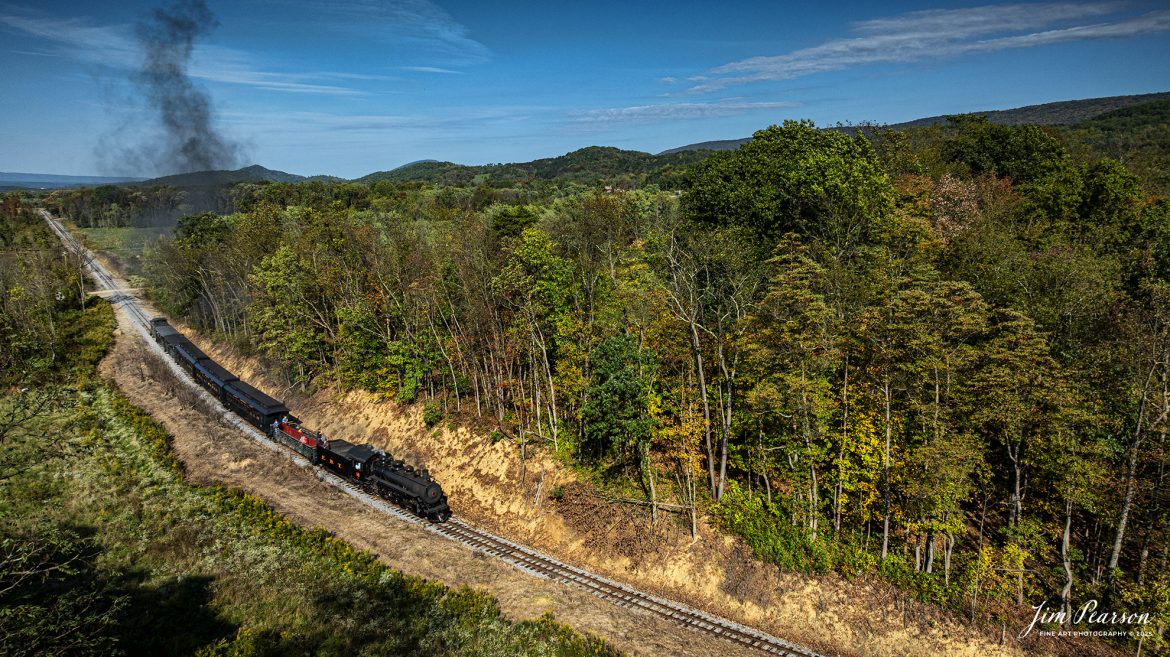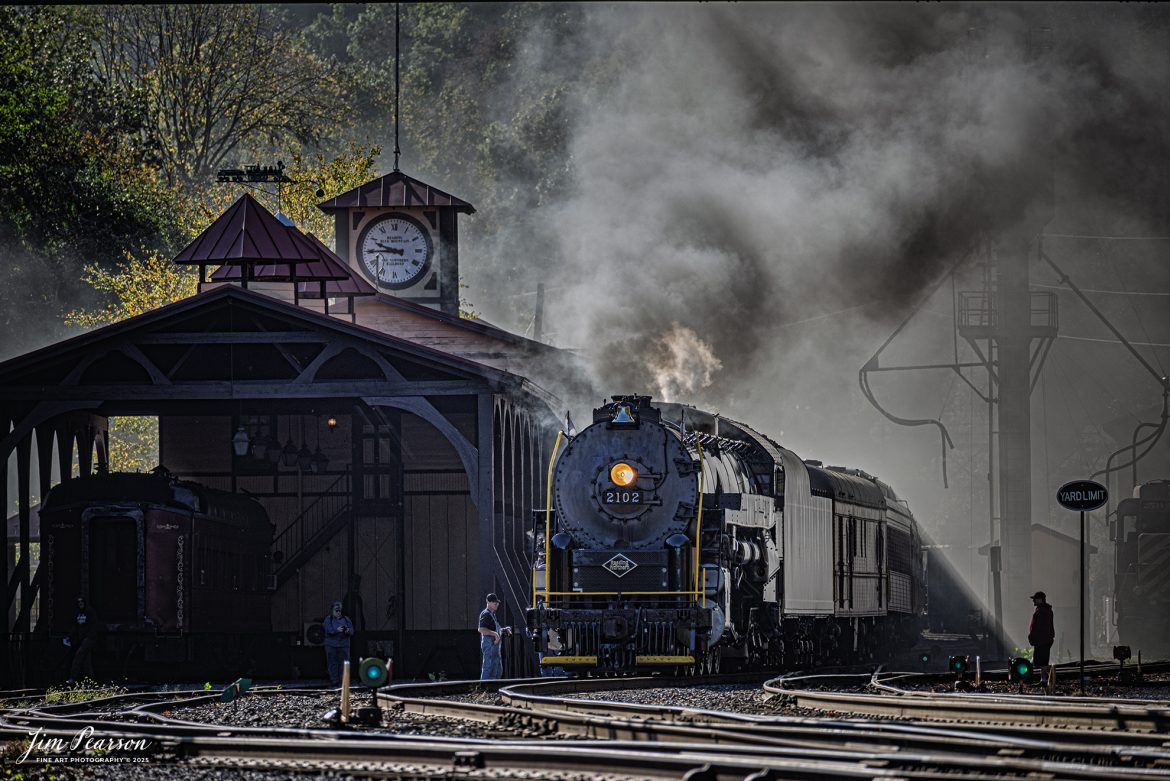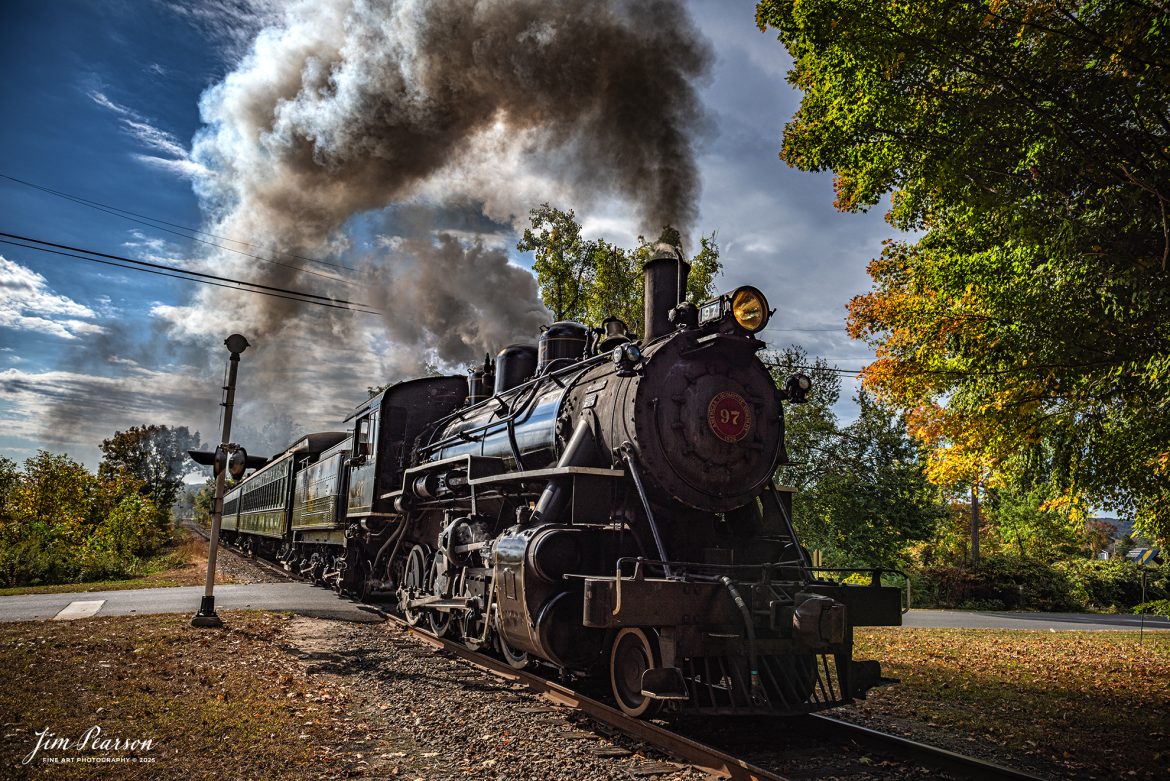March 22nd, 2025 – Episode 116 Railfanning the Paducah, Kentucky Area Saturday Edited Video from Jim Pearson Photography In this week’s video I’m taking you on a tour of some of my favorite spots to railfan around the Paducah, Kentucky area. Sit back, turn up the sound, expand to full screen and enjoy the trains!! Please like, share, subscribe and thanks for watching!
CSX M813 heads south into Casky Yard at Hopkinsville, Ky, with engines FXE4937, 4936, 4934, 4939, 4938 in tow
CSX M813 heads south into the north end of Casky Yard at Hopkinsville, Kentucky, with engines FXE4937, 4936, 4934, 4939, 4938 in tow on the CSX Henderson Subdivision on March 16th, 2025. The locomotives in tow are bound for the Ferromex Railroad.
Ferromex (reporting mark FXE) (syllabic abbreviation of Ferrocarril Mexicano, ‘Mexican Railway’) is a private rail consortium that operates the largest (by mileage) railway in Mexico with combined mileage (Ferromex + Ferrosur) of 12,100 kilometres (7,500 mi) and is often classed with North American Class I railroads.
Ferromex began operating on February 19, 1998, following the privatization of most of the government-owned railways by Mexican President Ernesto Zedillo Ponce de León. Ferromex operates more than 9,610 kilometers (5,970 mi) of track and interconnects five major inland Mexican cities, five cities along the border with the United States, four seaports on the Pacific Ocean, and one more on the Gulf of Mexico. Grupo México owns 74% and Union Pacific Corporation owns 26% of the company. The Ferromex system operates 9,610 km of Ferromex tracks plus 2,654 kilometers (1,649 mi) of Ferrosur tracks.
Tech Info: Nikon Z6ii Mirrorless Camera, RAW, Nikon 70-300 @240mm, f/5.6, 1/1000, ISO 900.
CSX M813 heads south through the S Curve at Nortonville, Ky, with engines FXE4937, 4936, 4934, 4939, 4938 in tow
CSX M813 heads south through the S Curve at Nortonville, Kentucky, with engines FXE4937, 4936, 4934, 4939, 4938 in tow on the CSX Henderson Subdivision on March 16th, 2025. The locomotives in tow are bound for the Ferromex Railroad.
Ferromex (reporting mark FXE) (syllabic abbreviation of Ferrocarril Mexicano, ‘Mexican Railway’) is a private rail consortium that operates the largest (by mileage) railway in Mexico with combined mileage (Ferromex + Ferrosur) of 12,100 kilometres (7,500 mi) and is often classed with North American Class I railroads.
Ferromex began operating on February 19, 1998, following the privatization of most of the government-owned railways by Mexican President Ernesto Zedillo Ponce de León. Ferromex operates more than 9,610 kilometers (5,970 mi) of track and interconnects five major inland Mexican cities, five cities along the border with the United States, four seaports on the Pacific Ocean, and one more on the Gulf of Mexico. Grupo México owns 74% and Union Pacific Corporation owns 26% of the company. The Ferromex system operates 9,610 km of Ferromex tracks plus 2,654 kilometers (1,649 mi) of Ferrosur tracks.
Tech Info: Nikon Z6ii Mirrorless Camera, RAW, Sigma 150-600 @170mm, f/5, 1/1000, ISO 400.
CSX M813 heads south at Nortonville, Kentucky, with engines FXE4937, 4936, 4934, 4939, 4938 in tow
CSX M813 heads south at Nortonville, Kentucky, with engines FXE4937, 4936, 4934, 4939, 4938 in tow on the CSX Henderson Subdivision on March 16th, 2025. The locomotives in tow are bound for the Ferromex Railroad.
Ferromex (reporting mark FXE) (syllabic abbreviation of Ferrocarril Mexicano, ‘Mexican Railway’) is a private rail consortium that operates the largest (by mileage) railway in Mexico with combined mileage (Ferromex + Ferrosur) of 12,100 kilometres (7,500 mi) and is often classed with North American Class I railroads.
Ferromex began operating on February 19, 1998, following the privatization of most of the government-owned railways by Mexican President Ernesto Zedillo Ponce de León. Ferromex operates more than 9,610 kilometers (5,970 mi) of track and interconnects five major inland Mexican cities, five cities along the border with the United States, four seaports on the Pacific Ocean, and one more on the Gulf of Mexico. Grupo México owns 74% and Union Pacific Corporation owns 26% of the company. The Ferromex system operates 9,610 km of Ferromex tracks plus 2,654 kilometers (1,649 mi) of Ferrosur tracks.
Tech Info: DJI Mavic 3 Classic Drone, RAW, 22mm, f/2.8, 1/2000, ISO 130.
CSX M813 heads across the Gum Lick trestle just north of Kelly, Ky with engines FXE4937, 4936, 4934, 4939, 4938
CSX M813 heads across the Gum Lick trestle just north of Kelly, Kentucky, with engines FXE 4937, 4936, 4934, 4939, 4938 in tow as they head south on the CSX Henderson Subdivision on March 16th, 2025. The locomotives in tow were bound for the Ferromex Railroad.
Ferromex (reporting mark FXE) (syllabic abbreviation of Ferrocarril Mexicano, ‘Mexican Railway’) is a private rail consortium that operates the largest (by mileage) railway in Mexico with combined mileage (Ferromex + Ferrosur) of 12,100 kilometres (7,500 mi) and is often classed with North American Class I railroads.
Ferromex began operating on February 19, 1998, following the privatization of most of the government-owned railways by Mexican President Ernesto Zedillo Ponce de León. Ferromex operates more than 9,610 kilometers (5,970 mi) of track and interconnects five major inland Mexican cities, five cities along the border with the United States, four seaports on the Pacific Ocean, and one more on the Gulf of Mexico. Grupo México owns 74% and Union Pacific Corporation owns 26% of the company. The Ferromex system operates 9,610 km of Ferromex tracks plus 2,654 kilometers (1,649 mi) of Ferrosur tracks.
Tech Info: DJI Mavic 3 Classic Drone, RAW, 22mm, f/2.8, 1/1600, ISO 160.
Film Wednesday, At the Budapest-Nyugati Railway Station, in Budapest, Hungry
Film Wednesday – 1993 – Today’s slide scans are from time that I spent at the Budapest-Nyugati Railway Station, in Budapest, Hungry. In this shot families wait on the platform for their train to arrive.
According to Wikipedia, Budapest Nyugati station (Hungarian: Nyugati pályaudvar, pronounced [ˈɲuɡɒti ˈpaːjɒudvɒr]; lit. ’western railway station’), generally referred to simply as Nyugati, is one of the three main railway terminals in Budapest, Hungary. The station is on the Pest side of Budapest, accessible by the 4 and 6 tramline and the M3 metro line.
The station was designed by Auguste de Serres and was built by the Eiffel Company. It was opened on 28 October 1877. It replaced another station, which was the terminus of Hungary’s first railway line, the Pest–Vác line (constructed in 1846). This building was demolished to construct the Grand Boulevard.
The station got its name from the adjacent Western Square (‘Nyugati tér’), a major intersection where Teréz körút (Theresia Boulevard), Szent István körút (Saint Stephen Boulevard), Váci út (Váci Avenue), and Bajcsy-Zsilinszky út (Bajcsy-Zsilinszky Avenue) converge. The square also serves as a transport hub with several bus routes, tram routes 4 and 6, and a station on M3 of the Budapest Metro.
Beside the terminal and partially above its open area there is the WestEnd City Center shopping mall. Inside the station is a McDonald’s restaurant which has been described as the “most elegant” McDonald’s in the world.
The music video for Gwen Stefani’s 2008 single Early Winter was partly shot at Nyugati. Starting in May 2016 the key scenes of the movie Terminal were shot over 27 nights.
Tech Info: Camera, Nikon F3, Ektachrome Slide Film, no other data recorded, Scanned with an PlusTek 82001i Film Scanner.
Film Wednesday – 1993 – Today’s slide scans are from time that I spent at the Budapest-Déli Railway Station
Film Wednesday – 1993 – Today’s slide scans are from time that I spent at the Budapest-Déli Railway Station, in Hungary. I like this shot of the traveler all in black passing all the train destinations in the background.
Tech Info: Camera, Nikon F3, Ektachrome Slide Film, no other data recorded, Scanned with an PlusTek 82001i Film Scanner.
CSX loaded rail train W471, being led by CSXT 5403, waits in the siding at Crofton, Kentucky
CSX loaded rail train W471, being led by CSXT 5403, waits in the siding at Crofton, Kentucky for northbound CSX hot intermodal, I128, on the CSX Henderson Subdivision on February 27th, 2025.
Tech Info: DJI Mavic 3 Classic Drone, RAW, 22mm, f/2.8, 1/1000, ISO 400.
East Broad Top steam locomotive #16 pulls a mixed freight through the countryside to Rockhill Furnace, PA
East Broad Top (EBT) steam locomotive #16 pulls a mixed freight through the countryside as they head to Rockhill Furnace, Pennsylvania on October 5th, 2024, during the museum’s Friends of the East Broad top event.
This is from a week-long trip I took with Bryan Burton (Photography) where we traveled 2,800 miles and covered steam operations at Reading and Blue Northern Railway (2102), East Broad Top Railroad, Strasburg Railroad and then a two-day photo charter by Dak Dillion Photography at the Valley Railroad in Essex, CT. It was a long, but fun and exciting trip for sure! You’ll see a lot of steam action over the coming weeks!
According to the East Broad Top Website: Locomotive #16 was built in 1916 by the Baldwin Locomotive Works.
Entering the age of modern steam in 1916, the EBT received its first of three large Mikados. Unlike the previous three smaller locomotives, #16 came with superheaters, piston valves, and Southern valve gear. One story mentions #16 pulled 60 empty hoppers from Mt. Union to Rockhill in one train, literally clearing out the yard. #16 underwent an overhaul in 1955 and made only a handful of trips in early 1956 before the railroad shut down an overhaul when the EBT shut down. On February 1, 2023, the locomotive returned to service.
Tech Info: DJI Mavic 3 Classic Drone, RAW, 24mm, f/2.8, 1/2000, ISO 100.
CSX loaded rail train W471 pulls slowly while dropping rail
CSX loaded rail train W471 pulls slowly while dropping rail as they pass the site where the last wooden bridge was located on the CSX Henderson Subdivision on Davis Road, north of Crofton, Kentucky on February 27th, 2025. CSX built a new road for residents to access their homes on the right side of this shot and have since torn down the old wooden bridge that used to cross over the tracks at this location.
Tech Info: DJI Mavic 3 Classic Drone, RAW, 22mm, f/2.8, 1/1250, ISO 100.
Reading Blue Mountain & Northern Railroad steam locomotive 2102 prepares to pull away from Port Clinton, Pa
Reading Blue Mountain & Northern Railroad steam locomotive 2102 prepares to pull away from the station at Port Clinton, Pennsylvania on October 5th, 2024,during its first day of the year of pulling Fall Foliage Excursions.
According to their website: The Reading Company T-1 class #2102 was built in the Reading’s own locomotive shops in 1945. With drivers of 70” diameter, it weighs 404 tons, and its tender holds up to 26 tons of coal, and up to 19,000 gallons of water. After the Reading Steam era was over, the Reading Company used 2102 for the Reading Rambles on several different excursions. The 2102 has had many different owners since it was retired by the Reading Railroad. It is one of only four to survive. The other remaining locomotives are the 2100, 2101, and 2124.
The Blue Mountain and Reading Railroad purchased the 2102 in 1987, and it ran on the Temple to South Hamburg line into the early 1990’s. Once the Blue Mountain and Reading Railroad became the Reading Blue Mountain & Northern, the 2102 ran over Reading & Northern’s rails for a short time before it was removed from service in the early 1990’s.
In 2022, steam locomotive 2102 reentered service on the Reading & Northern. The locomotive has been used actively to pull both passenger excursions and revenue freight trains.
Tech Info: Nikon D810, RAW, Nikon 70-300 @ 300mm, 5.6, 1640, ISO 360.
Canadian National 2257 leads CSX X217 empty autorack train southbound across the Red River at Adams, TN
Canadian National 2257 leads CSX X217 empty autorack train southbound across the Red River at Adams, Tennessee on March 11th, 2025, on the CSX Henderson Subdivision. The train is running as an extra M217 as it makes its way from Philadelphia, PA to Louisville, Ky.
Tech Info: DJI Mavic 3 Classic Drone, RAW, 22mm, f/2.8, 1/2000, ISO 100.
Canadian National 2257 leads CSX X217 empty autorack train southbound at Kelly, Kentucky
Canadian National 2257 leads CSX X217 empty autorack train southbound at Kelly, Kentucky on March 11th, 2025, on the CSX Henderson Subdivision. The train is running as an extra M217 as it makes its way from Philadelphia, PA to Louisville, Ky.
Tech Info: DJI Mavic 3 Classic Drone, RAW, 22mm, f/2.8, 1/1600, ISO 100.
CSX locomotive 5353 leads loaded ethanol train B795 at Nortonville, Ky
CSX locomotive 5353 leads loaded ethanol train B795 as the pass through the S curve at Nortonville, Kentucky as they head south on February 15th, 2023, on the Henderson Subdivision.
Tech Info: Nikon D810, RAW, Nikon 70-300 @ 145mm, f/4.8, 1/1250, ISO 180.
Saturday Infrared Photo, CSXT 3261 leads intermodal train, I128 at Kelly, Ky
In this week’s Saturday Infrared Photo, CSXT 3261 leads intermodal train, I128, around the curve at the north end of Kelly, Kentucky, on the Henderson Subdivision as they head north on March 3rd, 2024.
Tech Info: Fuji XT-1, RAW, Converted to 720nm B&W IR, Nikon 70-300 @ 110mm, f/5.6, 1/320, ISO 400.
March 15th, 2025 – Episode 115 Railfanning Southern Illinois and Indiana
Saturday Edited Video from Jim Pearson Photography
In this week’s video I’m taking you on a tour of some of my favorite spots to railfan around southern Indiana on the Norfolk Southern and CSX railroads. Sit back, turn up the sound, expand to full screen and enjoy the trains!! Thanks for watching! Don’t forget to Subscribe and Ring the Notification Bell so you won’t miss any of my future videos! Have a blessed day everyone!!
CSX M513 waits at Romney at it meets I128, south of Nortonville, Kentucky
Southbound CSX M513 waits at Romney, south of Nortonville, Kentucky as CSX northbound Intermodal I128 passes them on track 2, on January 17th, 2025, on the Henderson Subdivision.
M513 has PCS Group Switcher 1144 as the third unit and an ex-Union Pacific 4669 with reporting marks of SPTX stenciled on the side of the cab, with both units dead in tow.
According to their website, “PSC Group provides turnkey solutions for safe and efficient rail switching in some of the most challenging and complex sites throughout North America. We manage more than 75 rail switching sites using our own fleet of advanced locomotives and mobile railcar movers, proven safety methods, and highly skilled personnel. By working closely with our customers, we tailor our services to their unique needs, utilizing over 80 locomotives, 30 mobile railcar movers (Trackmobiles and Shuttle Wagons), and more than 1,000 skilled employees to enhance safety, decrease cycle time, prevent derailments, and optimize railcar utilization.
Over the years, we have found that performing railcar switching alongside loading/unloading, railcar repair, and inspections, creates a safer and more efficient operating environment while simultaneously delivering considerable savings. By bundling these synergistic services together, we can provide the most value to our customers’ operations.”
Tech Info: DJI Mavic 3 Classic Drone, RAW, 24mm, f/2.8, 1/640, ISO 320.
he Valley Railroad Company #97 heads through the countryside out of Essex, Connecticut
The Valley Railroad Company #97 heads through the countryside out of Essex, Connecticut with a passenger train on October 9th, 2024, as part of a two-day photo charter conducted by Dak Dillion Photography.
According to Wikipedia: The Valley Railroad, operating under the name Essex Steam Train and Riverboat, is a heritage railroad based in Connecticut on tracks of the Connecticut Valley Railroad, which was founded in 1868. The company began operations in 1971 between Deep River and Essex and has since reopened additional parts of the former Connecticut Valley Railroad line. It operates the Essex Steam Train and the Essex Clipper Dinner Train.
Tech Info: Nikon D810, RAW, Nikon 24-70 @ 24mm, f/5.6, 1/2500, ISO 80.
eptember 2, 2018 – A CTA pink line train takes a right at Tower 12
September 2, 2018 – A CTA pink line train takes a right at Tower 12 as another train rounds a curve heading into the interlocking in downtown Chicago, Illinois.
Tech Info: Nikon D800, RAW, Nikon 70-300 @300mm, f/5.6, 1/400, ISO 160.
September 1, 2018 – St. Louis-San Francisco Railroad steam locomotive 1630
September 1, 2018 – St. Louis-San Francisco Railroad steam locomotive 1630 sits in the station at the Illinois Railway Museum in Union, Illinois, waiting for it’s 8pm run, as the last light of day begins to fade from the sky.
According to Wikipedia, the locomotive was built in 1918 by the Baldwin Locomotive Works for use in Russia as a class Ye locomotive. However, it, along with approximately 200 other locomotives, remained in the United States, due to the inability of the Bolshevik government to pay for them, following the Russian Revolution.
1630 was converted from 5 ft (1,524 mm) Russian track gauge to 4 ft 8 1/2 in (1,435 mm) standard gauge. After being re-gauged, #1630 was sold to the USRA and was numbered 1147. Shortly after, 1147 was briefly leased for use on the Pennsylvania Railroad.
In 1920, the locomotive was sold to the St. Louis San Francisco Railway, where it was used as a mixed traffic engine. In 1951, the locomotive was sold to Eagle-Picher, who used it to haul lead ore from a mine to their smelter.
In 1967, the locomotive was donated to the Illinois Railway Museum, in Union, Illinois, where they began restoring it in 1972, it returned to operating condition in 1974 and made its first revenue run. Sometime after arriving at the museum, 1630 was restored from her Eagle Picher appearance back to her Frisco appearance. 1630 was taken out of service in 2004, and after more than six years undergoing repairs and a federally mandated rebuild, it was returned to operational condition on October 30, 2013.
On Memorial Day weekend 2014, the locomotive returned to excursion service. In 2016, the locomotive received a cylinder overhaul, which according to Steam department curator, Nigel Bennett, made the locomotive, “probably more powerful than she has been since her [sic] first arrival at IRM in the 1970s.” The locomotive, during Memorial Day weekend 2016, pulled 137 empty coal cars in storage at the museum as what was considered to be one of the longest revenue freight trains powered by a steam locomotive in at least 25 years as said by IRM’s Steam department curator.
Film Wednesday – 1993 – Today’s slide scans are from time that I spent at the Budapest-Nyugati Railway Station…
Film Wednesday – 1993 – Today’s slide scans are from time that I spent at the Budapest-Nyugati Railway Station, in Budapest, Hungry. This shot is of a conductor filling out his paperwork, prior to his train departing.
According to Wikipedia, Budapest Nyugati station (Hungarian: Nyugati pályaudvar, pronounced [ˈɲuɡɒti ˈpaːjɒudvɒr]; lit. ’western railway station’), generally referred to simply as Nyugati, is one of the three main railway terminals in Budapest, Hungary. The station is on the Pest side of Budapest, accessible by the 4 and 6 tramline and the M3 metro line.
The station was designed by Auguste de Serres and was built by the Eiffel Company. It was opened on 28 October 1877. It replaced another station, which was the terminus of Hungary’s first railway line, the Pest–Vác line (constructed in 1846). This building was demolished to construct the Grand Boulevard.
The station got its name from the adjacent Western Square (‘Nyugati tér’), a major intersection where Teréz körút (Theresia Boulevard), Szent István körút (Saint Stephen Boulevard), Váci út (Váci Avenue), and Bajcsy-Zsilinszky út (Bajcsy-Zsilinszky Avenue) converge. The square also serves as a transport hub with several bus routes, tram routes 4 and 6, and a station on M3 of the Budapest Metro.
Beside the terminal and partially above its open area there is the WestEnd City Center shopping mall. Inside the station is a McDonald’s restaurant which has been described as the “most elegant” McDonald’s in the world.
The music video for Gwen Stefani’s 2008 single Early Winter was partly shot at Nyugati. Starting in May 2016 the key scenes of the movie Terminal were shot over 27 nights.
Tech Info: Camera, Nikon F3, Ektachrome Slide Film, no other data recorded, Scanned with an PlusTek 82001i Film Scanner.





![Film Wednesday – 1993 – Today’s slide scans are from time that I spent at the Budapest-Nyugati Railway Station, in Budapest, Hungry. In this shot families wait on the platform for their train to arrive.
According to Wikipedia, Budapest Nyugati station (Hungarian: Nyugati pályaudvar, pronounced [ˈɲuɡɒti ˈpaːjɒudvɒr]; lit. 'western railway station'), generally referred to simply as Nyugati, is one of the three main railway terminals in Budapest, Hungary. The station is on the Pest side of Budapest, accessible by the 4 and 6 tramline and the M3 metro line.
The station was designed by Auguste de Serres and was built by the Eiffel Company. It was opened on 28 October 1877. It replaced another station, which was the terminus of Hungary's first railway line, the Pest–Vác line (constructed in 1846). This building was demolished to construct the Grand Boulevard.
The station got its name from the adjacent Western Square ('Nyugati tér'), a major intersection where Teréz körút (Theresia Boulevard), Szent István körút (Saint Stephen Boulevard), Váci út (Váci Avenue), and Bajcsy-Zsilinszky út (Bajcsy-Zsilinszky Avenue) converge. The square also serves as a transport hub with several bus routes, tram routes 4 and 6, and a station on M3 of the Budapest Metro.
Beside the terminal and partially above its open area there is the WestEnd City Center shopping mall. Inside the station is a McDonald's restaurant which has been described as the "most elegant" McDonald's in the world.
The music video for Gwen Stefani's 2008 single Early Winter was partly shot at Nyugati. Starting in May 2016 the key scenes of the movie Terminal were shot over 27 nights.
Tech Info: Camera, Nikon F3, Ektachrome Slide Film, no other data recorded, Scanned with an PlusTek 82001i Film Scanner.
#slidescan #filmphotography #trains #railroads #jimpearsonphotography #FilmPhotography](http://www.jimpearsonphotography.com/wp-content/uploads/2025/03/WEB-1993-People-waiting-on-train-at-Budapest-Hungry-1170x756.jpg)
![Film Wednesday – 1993 – Today’s slide scans are from time that I spent at the Budapest-Nyugati Railway Station, in Budapest, Hungry. I like this shot of the traveler all in black passing all the train destinations in the background.
According to Wikipedia, Budapest Nyugati station (Hungarian: Nyugati pályaudvar, pronounced [ˈɲuɡɒti ˈpaːjɒudvɒr]; lit. 'western railway station'), generally referred to simply as Nyugati, is one of the three main railway terminals in Budapest, Hungary. The station is on the Pest side of Budapest, accessible by the 4 and 6 tramline and the M3 metro line.
The station was designed by Auguste de Serres and was built by the Eiffel Company. It was opened on 28 October 1877. It replaced another station, which was the terminus of Hungary's first railway line, the Pest–Vác line (constructed in 1846). This building was demolished to construct the Grand Boulevard.
The station got its name from the adjacent Western Square ('Nyugati tér'), a major intersection where Teréz körút (Theresia Boulevard), Szent István körút (Saint Stephen Boulevard), Váci út (Váci Avenue), and Bajcsy-Zsilinszky út (Bajcsy-Zsilinszky Avenue) converge. The square also serves as a transport hub with several bus routes, tram routes 4 and 6, and a station on M3 of the Budapest Metro.
Beside the terminal and partially above its open area there is the WestEnd City Center shopping mall. Inside the station is a McDonald's restaurant which has been described as the "most elegant" McDonald's in the world.
The music video for Gwen Stefani's 2008 single Early Winter was partly shot at Nyugati. Starting in May 2016 the key scenes of the movie Terminal were shot over 27 nights.
Tech Info: Camera, Nikon F3, Ektachrome Slide Film, no other data recorded, Scanned with an PlusTek 82001i Film Scanner.
#slidescan #filmphotography #trains #railroads #jimpearsonphotography #FilmPhotography](http://www.jimpearsonphotography.com/wp-content/uploads/2025/03/WEB-1993-Lady-Walking-at-Budapest-Hungry-1170x756.jpg)











![September 1, 2018 - St. Louis-San Francisco Railroad steam locomotive 1630 sits in the station at the Illinois Railway Museum in Union, Illinois, waiting for it's 8pm run, as the last light of day begins to fade from the sky.
According to Wikipedia, the locomotive was built in 1918 by the Baldwin Locomotive Works for use in Russia as a class Ye locomotive. However, it, along with approximately 200 other locomotives, remained in the United States, due to the inability of the Bolshevik government to pay for them, following the Russian Revolution.
1630 was converted from 5 ft (1,524 mm) Russian track gauge to 4 ft 8 1/2 in (1,435 mm) standard gauge. After being re-gauged, #1630 was sold to the USRA and was numbered 1147. Shortly after, 1147 was briefly leased for use on the Pennsylvania Railroad.
In 1920, the locomotive was sold to the St. Louis San Francisco Railway, where it was used as a mixed traffic engine. In 1951, the locomotive was sold to Eagle-Picher, who used it to haul lead ore from a mine to their smelter.
In 1967, the locomotive was donated to the Illinois Railway Museum, in Union, Illinois, where they began restoring it in 1972, it returned to operating condition in 1974 and made its first revenue run. Sometime after arriving at the museum, 1630 was restored from her Eagle Picher appearance back to her Frisco appearance. 1630 was taken out of service in 2004, and after more than six years undergoing repairs and a federally mandated rebuild, it was returned to operational condition on October 30, 2013.
On Memorial Day weekend 2014, the locomotive returned to excursion service. In 2016, the locomotive received a cylinder overhaul, which according to Steam department curator, Nigel Bennett, made the locomotive, "probably more powerful than she has been since her [sic] first arrival at IRM in the 1970s." The locomotive, during Memorial Day weekend 2016, pulled 137 empty coal cars in storage at the museum as what was considered to be one of the longest revenue freight trains powered by a steam locomotive in at least 25 years as said by IRM's Steam department curator.
- #jimstrainphotos #illinoisrailroads #steamtrains #nikond800 #railroad #railroads #train #railways #railway #illinoisrailwaymuseum #steamtrain](http://www.jimpearsonphotography.com/wp-content/uploads/2025/03/WEB-09.01.18-Frisco-1630-Steam-at-station-IRM-Union-IL-1170x781.jpg)
![Film Wednesday – 1993 – Today’s slide scans are from time that I spent at the Budapest-Nyugati Railway Station, in Budapest, Hungry. This shot is of a conductor filling out his paperwork, prior to his train departing.
According to Wikipedia, Budapest Nyugati station (Hungarian: Nyugati pályaudvar, pronounced [ˈɲuɡɒti ˈpaːjɒudvɒr]; lit. 'western railway station'), generally referred to simply as Nyugati, is one of the three main railway terminals in Budapest, Hungary. The station is on the Pest side of Budapest, accessible by the 4 and 6 tramline and the M3 metro line.
The station was designed by Auguste de Serres and was built by the Eiffel Company. It was opened on 28 October 1877. It replaced another station, which was the terminus of Hungary's first railway line, the Pest–Vác line (constructed in 1846). This building was demolished to construct the Grand Boulevard.
The station got its name from the adjacent Western Square ('Nyugati tér'), a major intersection where Teréz körút (Theresia Boulevard), Szent István körút (Saint Stephen Boulevard), Váci út (Váci Avenue), and Bajcsy-Zsilinszky út (Bajcsy-Zsilinszky Avenue) converge. The square also serves as a transport hub with several bus routes, tram routes 4 and 6, and a station on M3 of the Budapest Metro.
Beside the terminal and partially above its open area there is the WestEnd City Center shopping mall. Inside the station is a McDonald's restaurant which has been described as the "most elegant" McDonald's in the world.
The music video for Gwen Stefani's 2008 single Early Winter was partly shot at Nyugati. Starting in May 2016 the key scenes of the movie Terminal were shot over 27 nights.
Tech Info: Camera, Nikon F3, Ektachrome Slide Film, no other data recorded, Scanned with an PlusTek 82001i Film Scanner.
#slidescan #filmphotography #trains #railroads #jimpearsonphotography #FilmPhotography](http://www.jimpearsonphotography.com/wp-content/uploads/2025/03/WEB-1993-Conductor-Writing-at-Budapest-Hungry-1170x759.jpg)